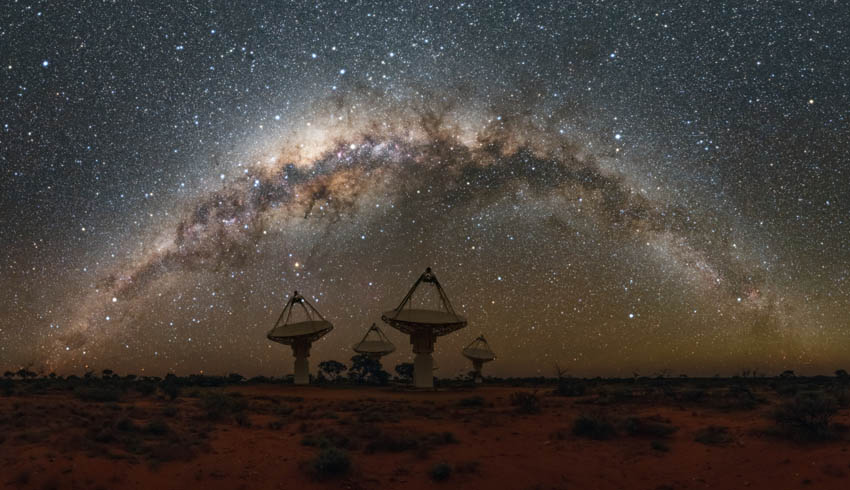
Lead author associate professor Jean-Pierre Macquart, from the Curtin University node of the International Centre for Radio Astronomy Research (ICRAR), said astronomers have been searching for the missing matter for almost 30 years.
The researchers were able to directly detect the missing matter using the phenomenon known as fast radio bursts — brief flashes of energy that appear to come from random directions in the sky and last for just milliseconds.
Scientists don’t yet know what causes them but it must involve incredible energy, equivalent to the amount released by the sun in 80 years.
They have been difficult to detect as astronomers don’t know when and where to look for them.
Professor Macquart explained, “We know from measurements of the Big Bang how much matter there was in the beginning of the universe.
“But when we looked out into the present universe, we couldn’t find half of what should be there. It was a bit of an embarrassment. Intergalactic space is very sparse. The missing matter was equivalent to only one or two atoms in a room the size of an average office.”
Macquart said the team detected the missing matter by using fast radio bursts as “cosmic weigh stations”.
“The radiation from fast radio bursts gets spread out by the missing matter in the same way that you see the colours of sunlight being separated in a prism,” he said.
The missing matter in this case is baryonic or ‘normal’ matter — like the protons and neutrons that make up stars, planets and you and me.
It’s different from dark matter, which remains elusive and accounts for about 85 per cent of the total matter in the universe.
Co-author Professor J. Xavier Prochaska, from UC Santa Cruz, said we have unsuccessfully searched for this missing matter with our largest telescopes for more than 20 years.
“The discovery of fast radio bursts and their localisation to distant galaxies were the key breakthroughs needed to solve this mystery,” he said.
Associate professor Ryan Shannon, another co-author from Swinburne University of Technology, said the key was the telescope used, CSIRO’s Australian Square Kilometre Array Pathfinder (ASKAP) radio telescope.
“ASKAP both has a wide field of view, about 60 times the size of the full moon, and can image in high resolution,” he said. “This means that we can catch the bursts with relative ease and then pinpoint locations to their host galaxies with incredible precision.”
“When the burst arrives at the telescope, it records a live action replay within a fraction of a second,” said Dr Keith Bannister from Australia’s national science agency, CSIRO, who designed the pulse capture system used in this research.
“This enables the precision to determine the location of the fast radio burst to the width of a human hair held 200 metres away,” he said.
“We’ve discovered the equivalent of the Hubble-Lemaitre Law for galaxies, only for fast radio bursts.
“The Hubble-Lemaitre Law, which says the more distant a galaxy from us, the faster it is moving away from us, underpins all measurements of galaxies at cosmological distances.”
The fast radio bursts used in the study were discovered using ASKAP, which is located at the Murchison Radio-astronomy Observatory in outback Western Australia. The international team involved in the discovery included astronomers from Australia, the US and Chile.
ASKAP is a precursor for the future Square Kilometre Array (SKA) telescope. The SKA could observe large numbers of fast radio bursts, giving astronomers greater capability to study the previously invisible structure in the universe.
Receive the latest developments and updates on Australia’s space industry direct to your inbox. Subscribe today to Space Connect here.












